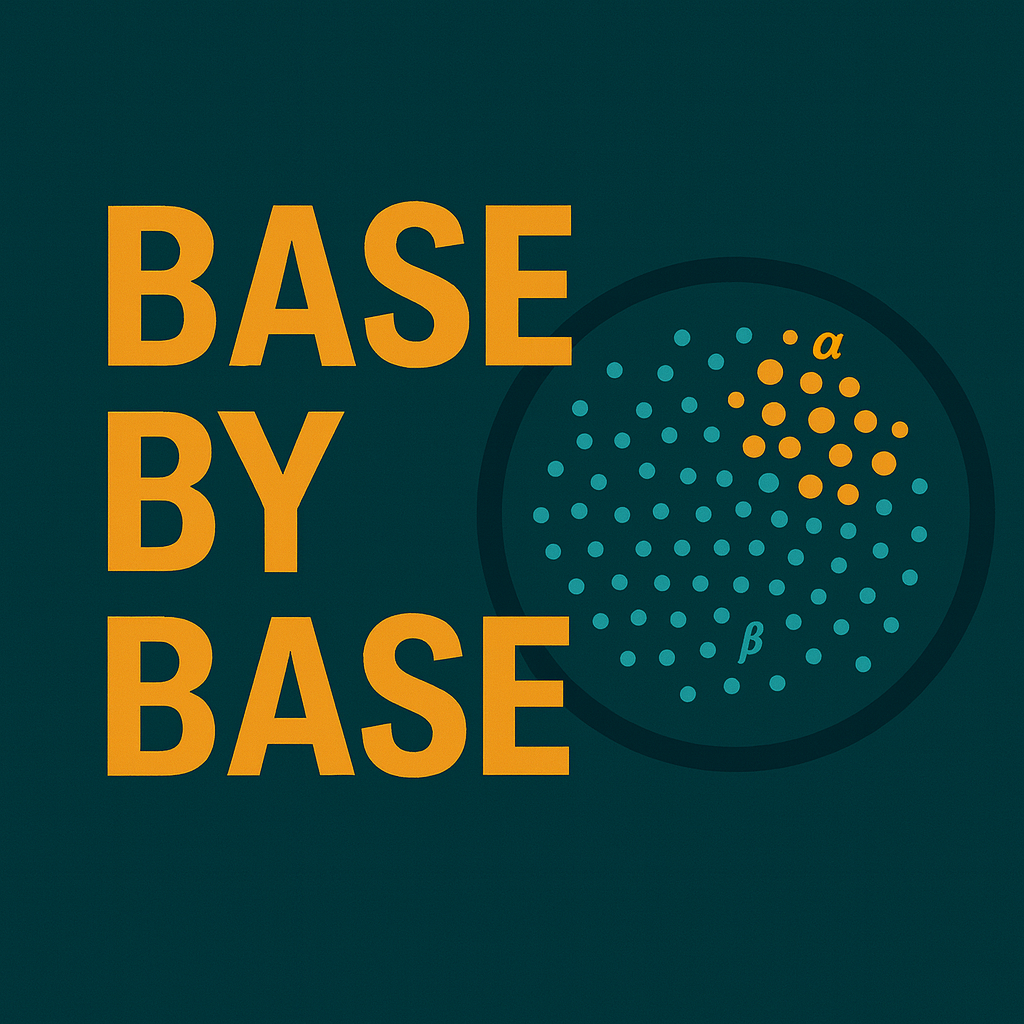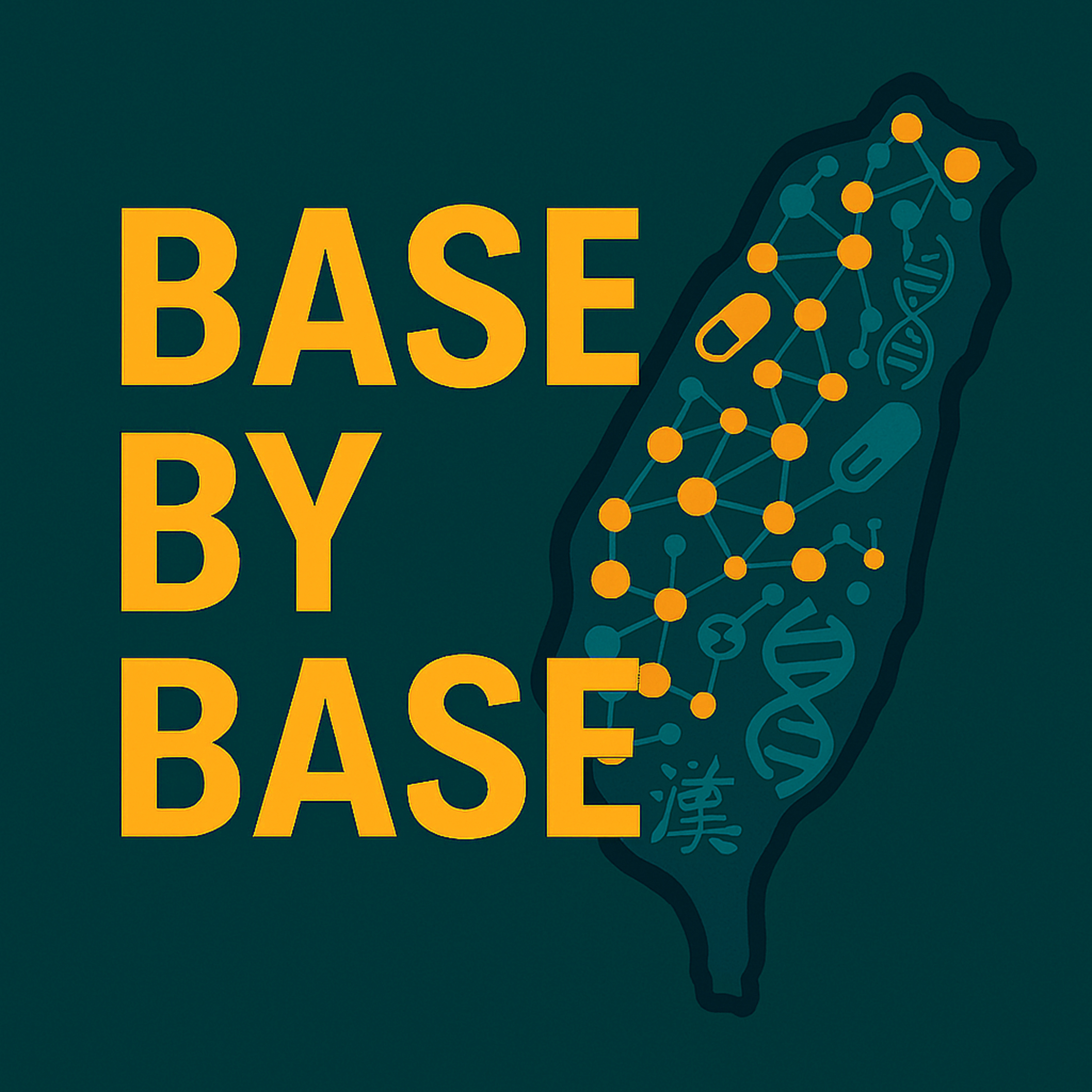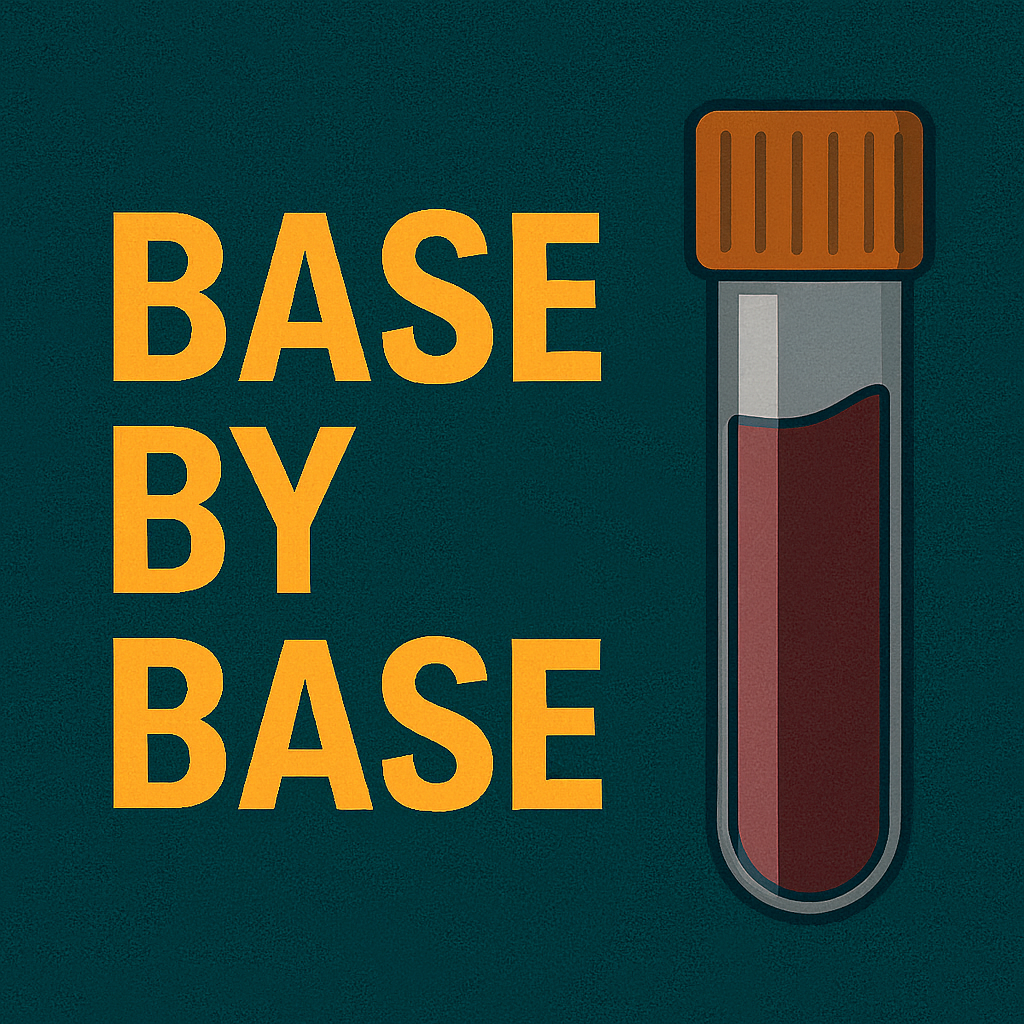Episode Transcript
[00:00:00] Speaker A: Foreign.
[00:00:14] Speaker B: Welcome to Base by Bass, the papercast that brings genomics to you wherever you are. We're kicking off this deep dive into a problem that frankly has plagued clinicians for decades. It's about chronic multi system symptoms that, you know, look like one thing, but just don't respond to treatment like they should imagine you or maybe someone, you know struggling with really severe persistent gut issues. They get told it's ibs, Irritable bowel syndrome, or perhaps it's joint hypermobility. Really pronounced, sometimes even gets mistaken for Ehlers Danlos syndrome. And maybe the most frustrating cardiovascular symptoms like a racing heart when standing up.
Postural orthostatic tachycardia syndrome. Now the common thread often running through these seemingly unrelated chronic problems occurring frequently, inflammation driven by mast cells. And what we're finding out is that these symptoms, which might affect what maybe 4% to 6% of people, are often linked back to a single kind of subtle genetic duplication. Something standard tests just tend to miss. The condition is hereditary erypticemia or agt. And the difficulty in actually diagnosing AGT has been this huge roadblock for patients needing answers. So our mission today is to unpack a new really state of the art genetic test that looks set by to.
[00:01:23] Speaker C: Solve this diagnostic puzzle. Finally.
[00:01:25] Speaker A: Yeah, it's definitely an exciting development in precision medicine. And today we should really celebrate the work of the team behind this, led by Abdul Razak, Al Araki, Albertus TJ Warenga and their colleagues. They're based at the University Medical Center Groningen in the Netherlands. What they've done isn't just a minor tweak. They've really streamlined the whole process for routine clinical diagnosis of H and, well, that kind of refinement, that's how research actually moves into the clinic and helps patients.
[00:01:55] Speaker C: Okay, great point. Let's back up a little for context. We keep mentioning Tryptase. What exactly is it? And why does having extra copies of this alpha version cause such widespread problems?
[00:02:04] Speaker A: Right, so Tryptase is an enzyme. Specifically it's a Trypsin, like serine proteinase. It's primarily stored inside mast cells. MCs. These are really crucial immune cells. You find them everywhere, basically, skin, airways, the gut lining, blood vessels.
[00:02:19] Speaker C: Okay, so if Tryptase lives inside these mast cells, why are we measuring it out in the blood serum?
[00:02:24] Speaker A: Ah, that's the key distinction. Basal serum Tryptase or bst. That's the low steady level we measure in healthy folks. This BST is mostly made up of immature forms and they're actually important for normal bodily functions, like regulating smooth muscle in the airways, gut, blood vessels, homeostasis stuff. The mature active form of Tryptase, the tetramer that only gets released in a big burst when mast cells degranulate. You see that typically during a severe allergic reaction, you know, IG mediated hypersensitivity or major inflammation. But with htt, it's different. You just have too many genes churning out Tryptase all the time, contributing to that basal level. So it pushes the baseline BST higher than normal constantly.
[00:03:06] Speaker C: I see. So the system isn't necessarily overreacting suddenly. It's just set at a higher operating level because of the underlying genetics. Let's dig into that genetic part then. HTT itself.
[00:03:15] Speaker A: Okay. The genetics here are.
Well, they're complicated. The human Tryptase locus on the chromosome is quite dense. You've got four genes involved, but really only alpha Tryptase and beta Tryptase significantly contribute to that BST level. We measure. And the critical bit? Alpha Tryptase is only encoded by one gene, TPSAV1. Beta trim taste, though that comes from both TPS AB1 and its very similar neighbor, TPSB2.
[00:03:41] Speaker C: And, hey, Qi is specifically about having extra alpha copies, right?
[00:03:45] Speaker A: Exactly. Hey, T is autosomal dominant, meaning you only need one altered copy from one parent to have it. And it's caused by having extra copies of that alpha Tryptase gene segment within the TPSA B1 locus. This duplication is surprisingly common. It's actually the main reason for elevated BST responsible for over 90% of such cases in the general population.
[00:04:04] Speaker C: 90%? Wow.
That's huge. It means this isn't some rare condition. It's pretty widespread, but tricky to spot. So why has it been so hard for labs to just count these extra copies accurately?
[00:04:13] Speaker A: That is the core diagnostic challenge. Both TPSAB1 and TPSB2 are packed really tightly together on chromosome 16 region P13.3. And they share incredible sequence similarity. Up to 98% identical in some parts.
[00:04:28] Speaker C: Hold on. 98% similarity? If you're using standard genetic tools, how.
[00:04:32] Speaker B: Do you tell them apart?
[00:04:33] Speaker A: It's like trying to tune into two radio stations broadcasting almost the same thing right next to each other on the dial. It's just noise. The genes are so alike and so close that this whole region is unstable. It's prone to breaking and recombining unevenly when DNA is passed down. This instability, plus the high similarity means typical methods like quantitative PCR or qpcr. They just get confused. They can't reliably tell how many alpha copies versus beta copies are truly there.
[00:04:58] Speaker C: So it's a notoriously difficult region of the genome to read accurately. And that explains the misdiagnosis problem, doesn't it, Doctor? See the symptoms, maybe measure a high bst. But getting that definitive genetic confirmation has been challenging. Or maybe just unavailable.
[00:05:12] Speaker A: Absolutely. And the clinical fallout is significant.
AGI doesn't just look like other conditions like IBS or pots. It can actually worsen them. Take systemic mastocytosis. Sm. That's a serious mast cell disorder. One of the diagnostic criteria for SM is having an elevated bst. Now, if a patient has achi, their high BST might be incorrectly flagged as evidence for sm, potentially leading them down the wrong treatment path.
[00:05:38] Speaker C: And even if SM is correctly diagnosed, knowing about coexisting ACHI is still important, right? It affects things.
[00:05:45] Speaker A: It definitely does. Think of it as a risk multiplier. For instance, we know AJI makes anaphylactic reactions much more severe in people allergic to B or wasp stings. Hymenoptera venom, allergy, hva. Those reactions can become life threatening. So a G is this kind of hidden factor amplifying other health issues. We really need a straightforward, accurate test for it.
[00:06:04] Speaker C: Okay, so we have this prevalent condition. Clinically complicated, genetically tricky. This is where Al Araki and the UMFG team came in with their technical solution. What exactly did they develop?
[00:06:14] Speaker A: They developed a new single well multiplex digital droplet PCR assay. That's ddpcr. And the key here is single well multiplex. The previous gold standard test, while good, needed two separate reactions, two wells. That makes it more costly, more time consuming, and introduces potential variability. This new test does it all at once. It measures both the alpha and beta tryptase copy numbers together in just one reaction. Much more efficient.
[00:06:41] Speaker C: Let's pause on DDPCR for a second. You said standard QPCR gets confused by the similarity. Why is digital droplet PCR better for this specific problem?
[00:06:50] Speaker A: Right. Okay, so DDPCR works differently. It takes the DNA sample and divides it up into thousands, maybe tens of thousands of tiny separate oil droplets. Each droplet basically acts like a mini test tube. Instead of measuring fluorescence from the whole sample mixed together, it counts how many droplets light up as positive for alpha, how many for beta, and how many are negative. This partitioning allows for absolute quantification. You get a really precise count of the starting number of alpha and beta copies. It bypasses the relative measurement issues that plague QPCR in this tricky region. That precision is exactly what's needed mechanically. Their new assay uses three fluorescent probes. In that single well, a triplex system. There's an alpha specific probe tagged with hex fluorescence, a beta specific probe tagged with FAM fluorescence, and then they cleverly included a reference gene, AP3B1, also tagged with hex. This acts as a stable baseline, a control for the amount of DNA in the sample.
[00:07:43] Speaker C: You mentioned DNA preparation. They didn't just use the raw DNA, they had to digest it first with an enzyme called bamhi. That sounds technical, but you said it was critical. Why the digestion step?
[00:07:53] Speaker A: Yeah, that's a really neat part of the method. It's the fix for that genomic instability issue. If you don't digest the DNA first, the analysis tends to underestimate the actual number of alpha copies present. Using BAMHI cuts the long DNA strands at specific known points. This effectively isolates the target alpha and beta regions in a way that makes them easier for the DD PCR probes to find and count accurately. It ensures they're counting the CIS formatted alpha copies, that specific duplication structure characteristic of hed, without mixing them up with the standard beta copies.
[00:08:25] Speaker B: Got it.
[00:08:25] Speaker C: So the enzyme cutting clears up the static, letting the DDPCR clearly distinguish the signals.
Despite the 98% similarity, it's about sample prep, making the measurement possible.
[00:08:36] Speaker A: Exactly right. And they really put this through its paces. The analytical validation involved 281 different cases.
But importantly, to see how it worked in a real clinical context, they focused on 141 symptomatic patients.
[00:08:50] Speaker C: And they were pretty careful about selecting that patient group, weren't they?
[00:08:53] Speaker A: Extremely careful. Rigorous, really. To make sure they were looking only at the effect of HOT on BST levels, they excluded anyone who might have high Tryptase for other reasons.
So no patients with known systemic mastocytosis, no other myeloid cancers, and crucially, no one with severe kidney failure. They define that as a kidney function below 15. They wanted to be sure any high BST was down to the HTT genetics.
[00:09:17] Speaker C: Makes sense. Ok, let's get to the results. How did this new single well test perform analytically? Did it match the old gold standard?
[00:09:25] Speaker A: The performance was well stellar. The single well multiplex DDPCR showed really high accuracy. If you look at the precision, the 99% prediction interval was incredibly narrow. Just 0.03 plus or minus 0.27 copy numbers. That kind of tightness means you can really trust the copy number result the lab gives you.
[00:09:46] Speaker C: And compared to the older two well.
[00:09:48] Speaker A: Method perfect match, 100% concordance. Every genotype they tested gave the same result with the new single well assay as with the previous gold standard. Plus they showed excellent separation between the alpha and beta signals and the droplets. Less than 0.01% overlap between the fluorescent peaks. Analytically speaking, this test is definitely ready.
[00:10:07] Speaker C: Okay, now for the really interesting part, connecting the genetics to the clinic. They look at the gene dose relationship. What did they find about alpha copies and actual Tryptase levels in patients?
[00:10:16] Speaker A: This, I think, is probably the most impactful finding for clinicians. They discovered a remarkably strong, almost perfect linear relationship between the number of alpha Tryptase gene copies a person has and their measured BST level. The statistical measure, the r squared value was 0.98.
[00:10:32] Speaker C: R squared of 0.98. That's incredibly high.
[00:10:35] Speaker A: It is. It basically means that 98% of the variation they saw in people's BST levels could be explained simply by knowing how many extra alpha gene copies they had. It's a very strong predictor, almost entirely.
[00:10:48] Speaker C: Driven by the gene count. So what was the actual increase in BST per extra copy? That seems like a key number.
[00:10:53] Speaker A: It is. The crucial statistic is this.
They calculated an average BST increase of 7.5 ng ML for each extra alpha tryptase gene copy.
[00:11:03] Speaker C: 7.5 ng per copy. That's a concrete number. Can you give us the average levels they saw?
[00:11:08] Speaker A: Sure. So, in their symptomatic group, patients who were wild type, meaning no extra alpha copies, the standard 2 beta 2 alpha configuration isn't usually specified this way. It's usually 2 beta 2 alpha total, but 0 extra alpha, they averaged about 5.22 NGMLBST. But patients with one extra alpha copy, the common extra 2 duplication, like 2 beta 3 alpha total, their average BST jumped way up to 15.2 NGMO. And in the rarer cases with 2 extra alpha copies, an alpha triplication like to beta 4 alpha total, the average BST was even higher, around 22.3 nanograms.
This clear stepwise increase really confirms the biological link between the gene dosage and the protein level.
[00:11:46] Speaker C: That strong link leads straight to the next big clinical question, the cutoff point. If a doctor sees a symptomatic patient with high BST and other causes are ruled out, what BST level should make them think? Okay, we need to test for edge T. Right.
[00:11:58] Speaker A: Based on their analysis of this symptomatic cohort, the study determined the optimal BST cutoff for predicting EDG D was 9.2mg 9.2.
[00:12:06] Speaker C: That feels like a practical number clinics can use. Yeah. How well did that cutoff perform in terms of diagnosis?
[00:12:11] Speaker A: Yeah, very well. At that 9.2 NGML threshold, they achieved really good diagnostic accuracy. Sensitivity was 98.1%, meaning it correctly identified 98% of people, people who actually had HT. And the specificity was 96.6%, meaning it correctly identified 96.6% of people who didn't have HT. Minimizing false positives. They did note, though, if you absolutely needed 100% specificity, zero false positives, you'd have to raise the cutoff to 14.1 NGML. But doing that drops the sensitivity quite a bit, down to 64.2%. So you'd miss a lot of true cases. So that 9.2 NGML really seems like the sweet spot for screening and deciding who needs the genetic test.
[00:12:49] Speaker C: Okay, so pulling this all together, what does this highly reliable, faster, single well assay mean for how he t is diagnosed going forward?
[00:12:55] Speaker A: Well, first off, it's just a more reliable and convenient method, better than the older too well approach, which, by the way, had previously reported a slightly lower specificity, around 90%. So this looks like an improvement. Second, it helps with standardization. The researchers also characterized specific lab cell lines HMC 1.2 as a negative control. It's actually 4 beta alpha. And Monomax 6 has a positive control. It has HOBT 2 beta 3 alpha. Labs anywhere can now use these same cell lines as benchmarks for quality control that ensures everyone's results are consistent.
[00:13:28] Speaker C: And for the doctor on the front lines dealing with that patient who has this confusing mix of symptoms, they now.
[00:13:33] Speaker A: Have a much clearer path. That 9.2 ng level is a concrete threshold. If a patient fits a clinical picture, has ruled out other causes, and is above 9.2, then ordering this specific genetic test makes a lot of sense. Plus, knowing that gene does affect the 7.5 ng ML per copy gives context. If the test comes back showing, say, an alpha triplication, the doctor knows to expect a significantly higher BST and can perhaps anticipate and manage symptoms more proactively.
[00:13:59] Speaker C: Okay, one last technical point. The authors addressed a limitation.
[00:14:03] Speaker B: They said the assay, like the old.
[00:14:05] Speaker C: One, can't reconstruct all possible complex HTT genotypes, which, why isn't that a major clinical drawback?
[00:14:12] Speaker A: That's a fair point they raised. The assay measures the total number of alpha and beta copies really well, but it might struggle to tell the difference between, say, someone with two extra alpha copies arranged one way versus someone with two extra alpha copies arranged slightly differently on the chromosome. If both arrangements lead to the same overall count, like two beta and four alpha copies total, it can't map the exact physical layout in every rare complex case.
[00:14:37] Speaker C: But why doesn't that detailed structural information matter so much clinically?
[00:14:41] Speaker A: Because what seems to drive the clinical picture, the elevated bst, the symptoms, is primarily the total number of functional alpha tryptase genes present, not necessarily their precise physical arrangement. The assay does accurately quantify that total number of extra alpha copies, and that's the key piece of information the clinician needs to understand the patient's biology and risk. So while the structural detail is interesting academically, the clinically crucial data is captured.
[00:15:07] Speaker C: That makes perfect sense. It provides the actionable information.
A really elegant piece of work bringing clarity to a confusing area.
Alright, let's wrap up with the main take home message for everyone listening this new single well multiplex DD PCR assay represents a real step forward. It's a highly accurate, efficient and state of the art tool for diagnosing hereditary alpha tryptosemia. It looks ready for routine clinical adoption, which should significantly speed up and improve the reliability of getting an HG diagnosis.
[00:15:38] Speaker A: And critically, it validates using basal serum Tryptase as a strong screening tool.
That level of 9.2 NGML in symptomatic patients, after ruling out other causes, is now a well supported flag, suggesting Ngiani is likely driven by those extra alpha Tryptase gene copies. It provides objective criteria in a previously murky diagnostic landscape.
[00:15:59] Speaker C: So the final thought to leave you what could this mean for clinical practice down the road? If a simple, accurate genetic test can now reliably identify age area early on, could it prevent years of diagnostic delays and misdirected treatments for potentially millions suffering from conditions often mistaken for ibs, pots or even Ehlers? Danlos this episode was based on an Open Access article under the CCBY 4.0 license. You can find a direct link to the paper and the license in our episode description if you enjoyed this, follow or subscribe in your podcast app and leave a five star rating. If you'd like to support our work, use the donation link in the description. Thanks for listening and join us next time as we explore more science base by base.




